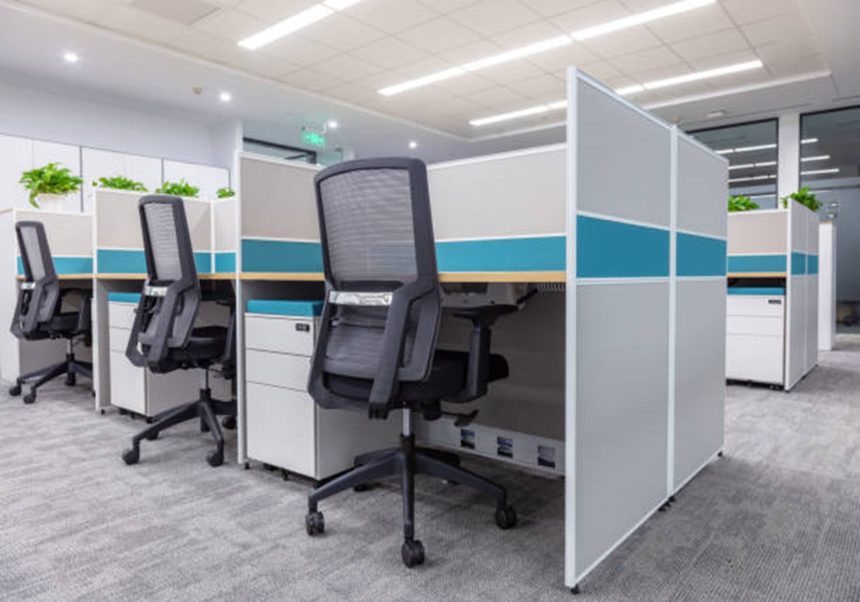Introduction to Cubicles
In the realm of office design, few elements have stirred as much controversy and discussion as the humble cubicle. Developed in the 1960s as a response to the open office concept, cubicles were intended to strike a balance between privacy and collaboration. Over the years, they have become synonymous with the corporate environment, eliciting both disdain and nostalgia. This article explores the evolution of cubicles, examining their historical context, current status, and potential future in the ever-changing landscape of office spaces.
The Birth of Cubicles:
The concept of the cubicle was pioneered by designer Robert Propst, who sought to address the shortcomings of open-plan offices. Introduced by Herman Miller in 1967 under the name “Action Office,” the original cubicle was designed to be a flexible and customizable workspace that provided employees with a sense of autonomy. However, as the idea gained popularity, it underwent modifications that gradually transformed it into the confined and uniform workspaces we often associate with cubicles today.
The Rise of Cubicle Culture:
By the 1980s, cubicles had become a ubiquitous feature in executive office across the globe. The shift towards cubicle culture was driven by a desire to maximize space efficiency and minimize costs. However, this transition also sparked a debate about the psychological and social impact of isolating employees within these modular spaces.
Proponents argued that cubicles fostered concentration and reduced distractions, while critics pointed to the potential negative effects on employee well-being, creativity, and collaboration. The term “cubicle farm” emerged as a colloquial expression for large office spaces filled with rows of identical cubicles, highlighting the perceived dehumanizing nature of such environments.
The Dot-Com Revolution and the Open Office Trend:
As the dot-com era emerged in the late 20th century, a counter-movement against cubicles gained momentum. Tech companies sought to foster innovation and collaboration by adopting open office layouts, tearing down walls and barriers in favor of shared spaces. This shift was motivated by the belief that increased visibility and accessibility would lead to more dynamic and creative work environments.
However, the open office trend brought its own set of challenges. The lack of privacy, constant noise, and potential for distraction led to a reevaluation of the open concept. Many companies found that the purported benefits of collaboration were often outweighed by a decrease in individual productivity and employee satisfaction.
The Modern Cubicle: A Hybrid Approach:
In response to the limitations of both traditional cubicles and open offices, modern workplaces are adopting a hybrid approach. The latest iterations of cubicles aim to combine the benefits of privacy and collaboration. Modular designs allow for flexibility, enabling employees to customize their workspace based on their needs. The emphasis is on creating environments that support both focused work and group interactions.
Moreover, advancements in technology have further influenced the design of modern cubicles. Integrated power outlets, adjustable desks, and ergonomic furniture contribute to a more comfortable and functional workspace. The focus is shifting towards creating an agile and adaptable office environment that caters to the diverse needs of a modern workforce.
Cubicles and Remote Work:
The global shift towards remote work, accelerated by the COVID-19 pandemic, has prompted a reassessment of the role of physical office spaces, including cubicles. As employees prove that they can be productive outside traditional office table, companies are reevaluating the necessity of large office spaces filled with cubicles.
Some argue that the future of cubicles lies in providing flexible, on-demand spaces for employees who choose to work in the office periodically. This model, often referred to as “hoteling” or “activity-based working,” allows employees to reserve cubicles or workspaces as needed, promoting a balance between remote work and in-person collaboration.
Conclusion:
The evolution of cubicles mirrors the dynamic nature of work culture and the ongoing quest to find the optimal balance between privacy and collaboration. From their inception as a revolutionary solution to the challenges of open offices to their current status as a versatile and customizable workspace, cubicles have weathered decades of criticism and adaptation.
As the workplace continues to evolve, so too will the design of office spaces. The future of cubicles may involve a synthesis of lessons learned from both traditional office layouts and modern open concepts, creating environments that prioritize employee well-being, flexibility, and collaboration. Whether the next chapter in the cubicle saga involves a further shift towards remote work or a reimagining of the physical office space, one thing is certain: the cubicle will remain a symbol of the ever-changing landscape of work and the quest for the perfect office environment.















